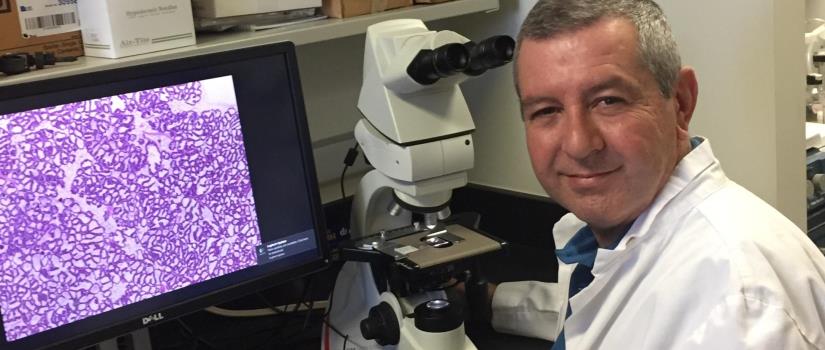The National Science Foundation’s (NSF) Established Program to Stimulate Competitive Research (EPSCoR) has awarded a $3.9 million Research Infrastructure Improvement grant to the University of South Carolina’s Peromyscus Genetic Stock Center (PGSC), along with collaborators at Claflin University and Auburn University, to complete a project investigating how genetic differences in individual mice determine their fitness under stress. Peromyscus, or deer mice, are used extensively to study many serious diseases, including Lyme disease. The PGSC is the only center in the world that maintains several Peromyscus species for scientific study of their unique traits.
USC is the home of the PGSC, a division of the Office of the Vice President for Research, which “is a unique-in-the-world facility that maintains and provides investigators throughout the United States, and the world, with wild-type and mutant Peromyscus,” explains the Center’s director and principal investigator on the NSF EPSCoR study, Hippokratis Kiaris, Ph.D., an associate professor in the College of Pharmacy. “With this grant, the PGSC will be positioned as the focal point for Peromyscus-associated research.”
This grant represents an exciting opportunity to expand the knowledge base about an important stress response.
— USC Vice President for Research, Prakash Nagarkatti
The PGSC and partners will do this by embarking on a unique study, recruiting diverse new faculty researchers, mentoring undergraduate students, particularly under-represented minority students, and developing a new series of physiological tests and methodologies that other researchers can use in their own studies. It will also develop a new Rodent Performance Testing Lab at Auburn University. “This grant represents an exciting opportunity to expand the knowledge base about an important stress response,” USC Vice President for Research, Prakash Nagarkatti said. “The collaborative nature of the project will also enhance capabilities for further Peromyscus research at all of the participating institutions, and provide opportunities for diverse undergraduate, graduate, postdoc and early career faculty researchers to gain valuable hands-on experience."
The study will capitalize on the unique strengths of each participating institution to identify the genetic and epigenetic pathways responsible for the variation in a specific type of cellular stress response common to all mammals, known as the unfolded protein response (UPR). The UPR occurs when improperly folded proteins, which can cause problems in cells, build up in the endoplasmic reticulum (ER), which is the portion of the cell where new proteins are made and regulated. ER regulation activities allow new, well-formed proteins to exit the cell and proceed to their destination, and eliminate those that are unfolded, or malformed, before they can leave the cell. When a cell produces a high level of unfolded proteins, the UPR kicks in and causes the cell to create more ER to better regulate new proteins. When the increased ER fails to resolve the build-up of unfolded proteins, the UPR triggers apoptosis, or programmed death of the faulty cell, preventing the malformed proteins from getting out into the body and doing harm.
Stressors like low oxygen or poor diet can cause the ER to have trouble regulating proteins, leading to an elevated UPR. The study will investigate how these stressors impact the UPR in two separate populations of Peromyscus maniculatus, or the North American deer mouse. The project will compare the variation in ER stress and the resulting UPR in a group of North American deer mice derived from wild populations at high altitudes, and a group derived from low altitudes, where they have evolved to display a wide variation in UPR activity.
The goal is to learn more about the variation in ER stress and the UPR that reflects how these dynamics function in wild, natural mouse populations, with each participating institution contributing uniquely, according to their expertise. The research teams from USC and Claflin will apply their strong background in ER stress, genomics and bioinformatics, and Auburn researchers will bring expertise in evolution and physiology to bear on the project.
The co-principal investigator on the project is Dr. Wendy Hood from Auburn University, while a scientific advisory board consisting of Dr. Alan Barbour (University of California, Irvine), Dr. Randy Nelson (Ohio State University) and Dr. Brian Trainor (University of California, Davis) has been assembled.
2 August 2017
